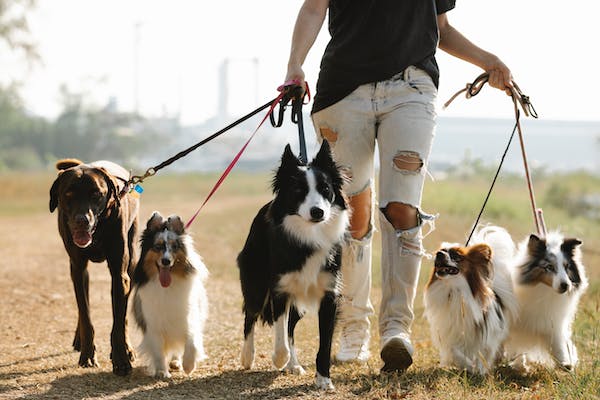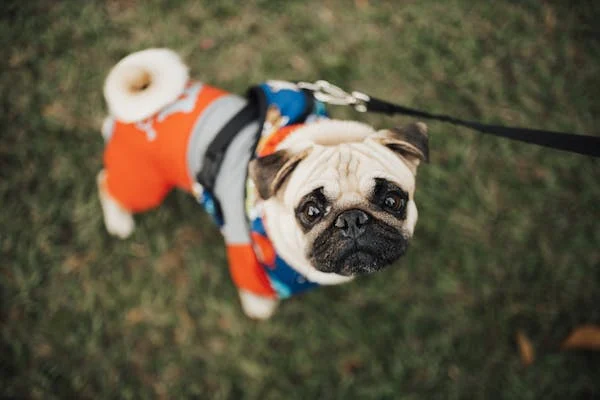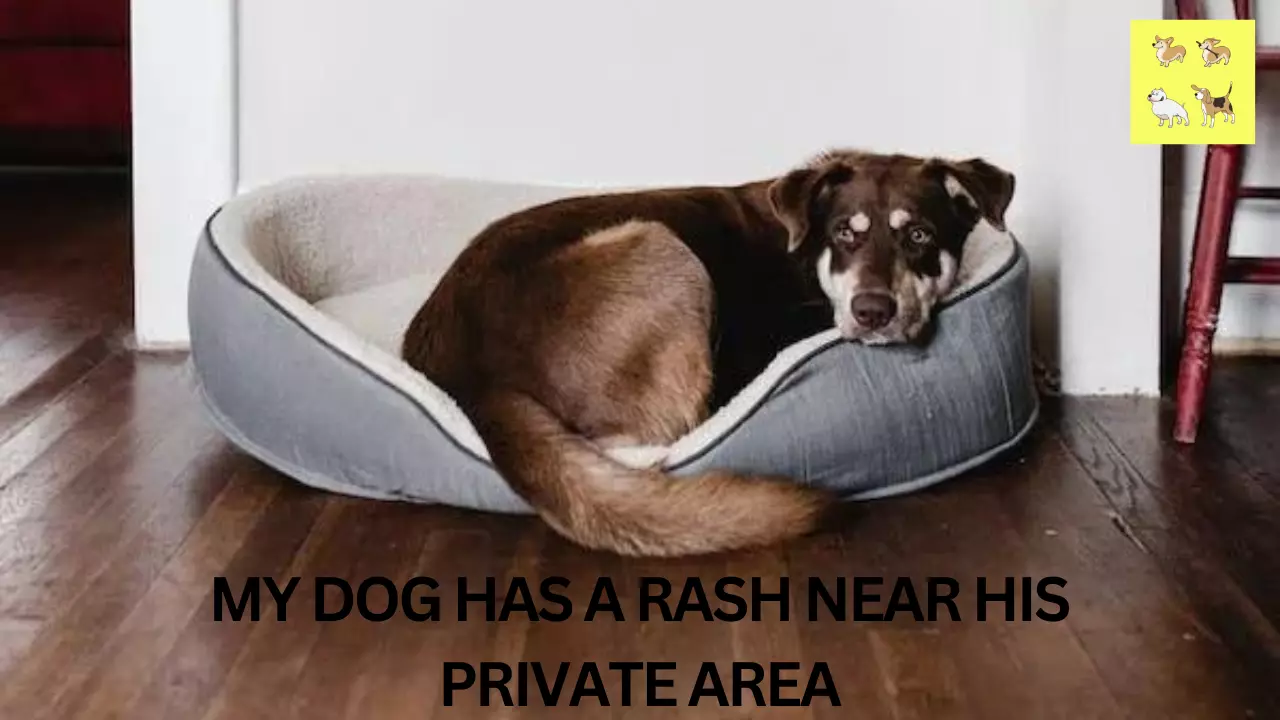If you are a dog owner, you know that our furry friends can experience a variety of health problems. One common problem that many dogs face is rashes near their private area.
As a dog owner myself I have dealt with this issue first hand and I understand how unsettling it can be.
A rash near a dog’s private area can be caused by a number of factors, including allergies, infections and behavioral problems.
Determining the root cause of the rash is crucial to finding the right treatment. While some rashes may resolve on their own, others may require medical attention.
It is important to monitor your dog’s rash closely and contact your vet if it persists or worsens.

Causes of Rash Near Dog’s Private Area

There are many potential causes of a rash on your dog’s private region, including bacterial or fungal infections, allergies, or parasites.
I will go into more depth about each of these causes in this section.
Bacterial Infections
Rashes in dogs are frequently brought on by bacterial infections, particularly in damp regions like the groyne.
Numerous bacteria, including Streptococcus and Staphylococcus, can cause these infections.
A bacterial infection may show symptoms like swelling, redness, and drainage from the affected area. Typically, a veterinarian will prescribe antibiotics as part of the treatment.
Yeast Infections
Infections with fungi, like ringworm, can also result in rashes close to a dog’s private region.
These illnesses can spread from people or other animals.
Itching, hair loss, and circular sores are some signs of a fungus infection. Antifungal medications that a veterinarian prescribes are frequently used as a kind of treatment.
Allergies
Another typical reason for dog rashes is allergies.
Food, environmental triggers, flea bites, and other things can all elicit allergic reactions.
An allergic reaction can cause swelling, redness, and itching. The allergy should be recognised and avoided, or a veterinarian may prescribe medicine.
Parasites
Rashes can also develop close to a dog’s private area as a result of parasites like fleas or mites. These parasites can itch and irritate the skin, which might result in a rash.
Typically, a veterinarian may prescribe medicine for parasite prevention as part of treatment.
Take your dog to the vet for an accurate diagnosis and treatment if they see a rash close to their private area.
Finding the source of the rash will enable you to make your dog more comfortable and stop subsequent issues.
Also Read
- Homemade Anti-Inflammatory Dog Food: Recipes and Benefits
- Homemade Dog Food Recipes for Gastrointestinal Problems In 2023
- 5 Best Homemade Dry Shampoo for Itchy Dogs (Step by Step)

Symptoms of Rash Near Dog’s Private Area

As a dog owner, I am aware of how alarming it may be when our four-legged pals get a rash close to their personal space.
The good news is that there are warning indicators to watch for that can help us spot the issue before it gets out of hand.
I’ll go over the outward indications and alterations in behaviour that could point to your dog having a rash close to their private area in this part.
Visual Signs
The presence of red spots or bumps is the most visible indicator of a rash close to a dog’s private area.
These lesions may be itchy, swollen, and occasionally come with drainage or an unpleasant odour.
Skin that is scaly or flaky, hair loss, and open sores are some more apparent indicators.
If you notice any of these symptoms, it’s important to take your dog to the vet as soon as possible.
A vet can diagnose the underlying cause of the rash and provide appropriate treatment.
Behavioural Alterations
A rash close to a dog’s private area can result in behavioural changes in addition to obvious symptoms.
For instance, your dog can begin compulsively licking or scratching the affected area. They might also become more agitated or hostile, particularly if the rash is upsetting them.
It’s crucial to address the issue right away if you see any of these behavioural changes. Ignoring the matter could eventually result in more severe health issues.
It’s critical to take your dog to the doctor for an accurate diagnosis and treatment if you see any outward indicators or behavioural changes in them.
You may help to ensure your dog’s health and wellbeing by taking the initiative and taking care of the problem as soon as it arises.

Diagnosis of Rash Near Dog’s Private Area

It’s crucial to take your dog to the vet for a precise diagnosis if you find they have a rash close to their private parts.
Here are some typical techniques a veterinarian could employ to identify the rash:
Physical Examination
The veterinarian will visually examine the region around your dog’s private area while performing a physical examination.
Additionally, they could palpate the area to feel for lumps or bumps. The veterinarian will check for any indications of swelling, redness, or discharge.
They might also inquire about your dog’s behaviour and any dietary or environmental changes.
Laboratory Tests
The veterinarian may occasionally advise laboratory testing to assist identify the rash’s underlying cause.
This could involve a culture to look for bacterial or fungal illnesses or a skin scraping to look for parasites.
In order to rule out any underlying medical issues, blood testing may also be advised.
It’s significant to remember that the rash’s underlying cause might not always be obvious.
In some circumstances, a biopsy may be required to identify the rash’s underlying aetiology.
You should get your dog to the clinic as soon as you can if they have a rash close to their private region.
Your dog can feel their best again with the right diagnosis and care.

Treatment of Rash Near Dog’s Private Area
I should take my dog to the vet for a good diagnosis and treatment if I see that he has a rash close to his private region.
The veterinarian may suggest one or more of the following therapies, depending on the underlying reason for the rash:
Medications
The veterinarian may recommend antibiotics or antifungal drugs if the rash is brought on by a bacterial or fungal infection.
These drugs may aid in removing the infection and reducing swelling in the affected area.
It’s crucial to carefully follow the veterinarian’s recommendations and administer the meds for the entire duration of treatment.
Topical Treatments
Topical treatments can help to soothe the skin and reduce itching and inflammation. Some examples of topical treatments that may be recommended by the vet include:
- Hydrocortisone cream
- Aloe vera gel
- Calamine lotion
- Witch hazel
- Coconut oil
It is important to use these treatments as directed by the vet, and to avoid applying them too frequently or in excessive amounts.
Surgery
Surgery may occasionally be required to remove a tumour or lesion that is the cause of the rash.
This is normally only advised if all other treatments have failed or if the tumour is malignant.
Maintaining cleanliness and dryness in the affected area is crucial. Excessive scratching or licking should also be avoided.
In addition, I should make sure my dog is getting adequate exercise and rest, as well as a nutritious and balanced diet.
In general, the underlying cause of the rash will determine the best course of treatment for a rash close to my dog’s private area.
However, with the right diagnosis and care, the majority of dogs are able to make a full recovery and resume their regular activities.
Also Read
- Homemade Dog Shampoo for Itchy Skin In 2023
- Homemade Dog Shampoo for Yeast Infection In 2023
- 5 Easy Homemade Recipes for Dogs with Yeast Infections

Prevention of Rash Near Dog’s Private Area
I recognise the significance of avoiding rashes close to my dog’s private region as a conscientious dog owner.
I did some research and discovered that there are various strategies to avoid having this problem in the first place.
Hygiene
It is essential to practise good cleanliness to avoid rashes close to my dog’s private area. I make sure to routinely wash my dog’s private areas with warm water and a mild, dog-friendly soap.
In addition, after washing, I gently pat the area dry with a clean towel.
I try to stay away from using items with strong scents or chemicals that can harm my dog’s skin.
To stop the spread of bacteria, I also make sure to thoroughly wash my hands both before and after touching my dog’s privates.
Diet
My dog’s overall health, especially the condition of their skin, depends on eating well.
I make sure to provide my dog a nutritious food that is well-balanced and contains high-quality protein, necessary fatty acids, vitamins, and minerals.
I also steer clear of giving my dog things like wheat, dairy, and particular meats that can cause an allergic reaction.
I work with my veterinarian to develop a meal plan that satisfies my dog’s nutritional needs while avoiding allergens if they have a history of food allergies.
Environmental Factors
Environmental factors such as allergens, parasites, and irritants can also cause rashes near my dog’s private area.
I take steps to minimize my dog’s exposure to these factors by:
- Keeping my dog’s living area clean and free of potential irritants such as dust, mold, and chemicals
- Using flea and tick prevention products recommended by my vet
- Avoiding areas where my dog may come into contact with allergens such as pollen, grass, and certain plants
I may contribute to the health and absence of rashes in my dog’s private region by adhering to these preventative steps.
If my dog does get a rash, I go to the vet right away so they can figure out what caused it and treat him accordingly.

Frequently Asked Questions Related To Dog Has a Rash Near His Private Area
How to treat a dog’s rash on their private area?
If your dog has a rash on their private area, the first step is to take them to the vet. The vet will examine the rash and determine the underlying cause. Depending on the cause, the vet may prescribe medication, such as antibiotics or antifungal medication, or recommend topical treatments.
What are some home remedies for a dog’s rash on their belly and inner thighs?
While it’s always best to consult with a vet, there are some home remedies that may help soothe a dog’s rash on their belly and inner thighs. One option is to apply a cool compress to the affected area. Another option is to give the dog a bath using an oatmeal-based shampoo, which can help soothe the skin.
What is the best way to soothe a dog’s hot spot?
Hot spots are a common skin condition in dogs that can be very uncomfortable. To soothe a hot spot, you can apply a cool, damp compress to the affected area. You can also use a topical cream or spray that contains hydrocortisone, which can help reduce itching and inflammation.
How can I prevent my dog from getting a rash on their groin?
To prevent a rash on your dog’s groin, it’s important to keep the area clean and dry. Regular grooming can also help prevent skin irritation. If your dog is prone to skin allergies, it’s important to identify the allergen and avoid it.
What are the common causes of a rash on a dog’s private parts?
There are many possible causes of a rash on a dog’s private parts, including allergies, parasites, bacterial or fungal infections, and skin irritation. It’s important to have your dog examined by a vet to determine the underlying cause of the rash.
What are some effective products to treat a dog’s skin rash?
There are many effective products that can be used to treat a dog’s skin rash, including topical creams and sprays, medicated shampoos, and oral medications. However, it’s important to consult with a vet before using any products on your dog’s skin to ensure that they are safe and effective.




